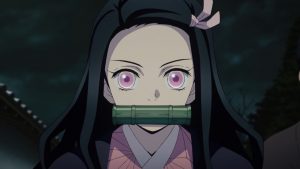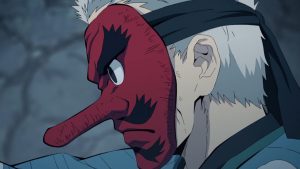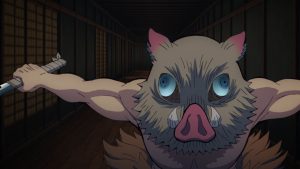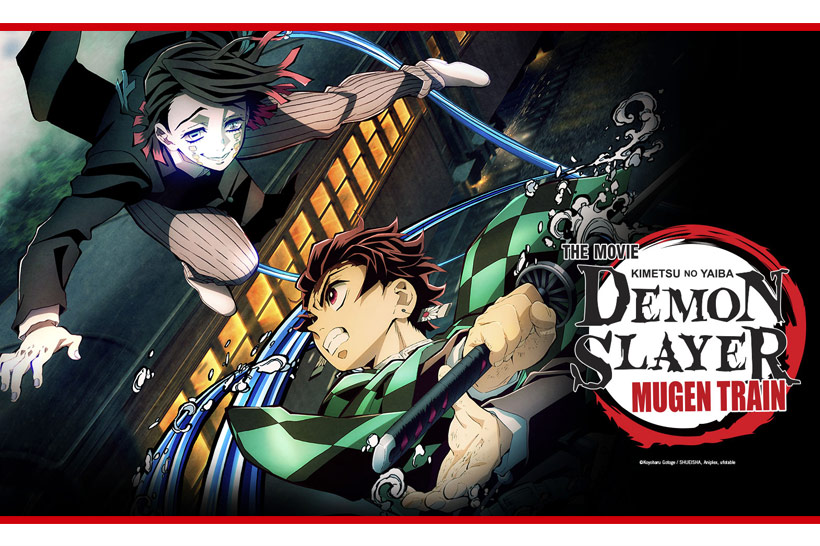Living with his mother and siblings in the mountains, the young Tanjiro Kamado spends his days selling charcoal in the nearby village until the day he returns home to find that his family has been viciously murdered by a demon. Although his sister Nezuko has survived the attack, as a result of her wounds being exposed to demonic blood, she has become a demon. While trying to carry his sister to safety, Tanjiro is confronted by a demon slayer named Giyu who attempts to kill Nezuko. In the ensuing struggle, Giyu witnesses Nezuko protect her brother despite her demonic transformation, and decides to spare them so Tanjiro can train to become a member of the Demon Slayer Corps. Training under Demon Slayer Urokodaki, Tanjiro begins the gruelling process of learning how to slay demons is he can avenge his family and search for a cure to return Nezuko to her human self, learning about the nature of both demons and humans as his training progresses.

Demon Slayer: Kimetsu No Yaiba is the critically acclaimed shonen anime and manga series created by Koyoharu Gotouge that has quickly made a place for itself as one of the biggest breakout anime titles in recent years. Set during the Taisho Period of Japan (1912-1926), the series feels like a classical period drama with modern storytelling sensibilities and twists, and plenty of gutsy action to showcase the incredible powers of the demons and the Demon Slayers that battle them. Containing the first 13 episodes of the series, Demon Slayer: Kimetsu No Yaiba – Part 1 throws its viewers straight into the tragedy of the Kamado siblings following the loss of their family, as they struggle to adapt to their new circumstances and survive in a world filled with demons and Demon Slayers. The world Tanjiro and Nezuko find themselves in is as dangerous as it is captivating, with the blend of traditional and modern Japan during the Taisho period lending a really fascinating backdrop and almost mythological quality to the series as fantastical demons clashes take place in rural Japan and the metropolitan city of Tokyo. This gives Demon Slayer: Kimetsu No Yaiba a fresh and exciting quality that makes it stand apart from other anime titles, helped along by a solid and satisfying sense of progression throughout the first 13 episodes as Tanjiro trains with Urokodaki, and he and Nezuko begin to hone their abilities as they travel the country to find the demon that slaughtered their family.

Tanjiro and Nezuko make a great team and are two enjoyable protagonists, with the series at its best when the two siblings are working together. Tanjiro’s natural softness and kidness to those he meets is very endearing, and is often challenged when he is faced with dangerous demonic foes who want nothing more than to tear him apart. However, Tanjiro’s kindness is not presented as a weakness, but a respect for demons that were once themselves human, and the unspoken fear that this could be the fate that awaits his sister. Similarly, Nezuko is amazing and although we don’t get to spend much time with her as a human, has a really fun personality as a demon that shines through her body language and interactions with her brother despite her inability to speak. Nezuko has some of the greatest moments in the show, with her involvement in a fight that takes place in the second episode completely stealing the show and instantly making her one of my favourite characters of the series. Unfortunately, Nezuko spends a lot of Demon Slayer: Kimetsu No Yaiba – Part 1 asleep or otherwise out of the picture as Tanjiro trains, and is often hidden away in a box that Tanjiro carries her around in during the day to prevent her from being burned to ash due to her demonic form. As I genuinely believe the series is at its most entertaining when Tanjiro and Nezuko are interacting and their relationship is the heart of the series, I hope in future episodes Nezuko gets to spend more time outside of her box.

Demon Slayer: Kimetsu No Yaiba does some really interesting things with animation, and animation studio Ufotable deserves some praise. When fighting, Tanjiro uses a swordsmanship form called Water Breathing style against his opponents. The way this is stylised in the anime is really neat as the water enveloping Tanjiro’s attacks are animated to look like something straight out of a Hokusai painting. Frenetic energy, a dynamic camera, and the illusion of intense speed are also used extremely well along with the Water Breathing style to make the action in Demon Slayer: Kimetsu No Yaiba – Part 1 exciting and memorable, with a fight between Tanjiro and a demon in a rotating room towards the end of the series sticking out as a particularly good example of a fight that uses each of these elements. I also want to highlight that the series uses a lot of well executed animation “shortcuts”, such as the use of 3D character models for longshots and 3D environments that make good use of the dynamic camera by following the action rather than remaining static and lingering awkwardly on 3D models. It’s not completely seamless, as some of the shots focusing on the 3D models sometimes linger too long and the movements can be much clunkier than they are in 2D animation, but the blend of animation works well overall and is used to great effect in several of the fast-paced action sequences.

Having only recently begun my viewing of the Hunter X Hunter series, I was worried that I would experience a “shonen anime fatigue” that would impact my enjoyment of Demon Slayer: Kimetsu No Yaiba. Thankfully, this wasn’t the case – Demon Slayer: Kimetsu No Yaiba – Part 1 weaves a tale of loss and empathy in a series with all the best hallmarks and polish of an action-packed shonen. Tanjiro and Nezuko’s story is one I am keen to see unfold as they continue their struggle against demons, and with the introduction of several new and interesting characters towards the end of the 13 episodes I can’t wait to jump back into this series for part 2.
A review copy was provided by Madman Entertainment to the author for the purpose of this review.
© Koyoharu Gotoge / SHUEISHA, Aniplex, ufotable





